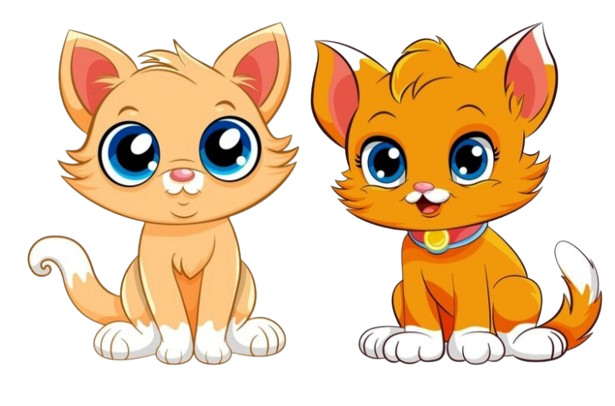Moscow Semi-longhair, Hair Siberian Forest Cats
What History of Siberian Forest Cats?
The Siberian cat is an ancient breed that has existed for at
least 1,000 years. Written records mention these cats dating back to the 13th
century, but the first Siberians were exhibited only in 1870, and then in 1884
at exhibitions that were held at Madison Square Gardens in the States. Over
time, these large and attractive cats could be seen in Siberian forests, around
markets, and as street cats in Siberia.
Many began to domesticate these feral cats, and pretty soon
they became known as the aboriginal cats of Russia and were exhibited at many
exhibitions. The very first breed standard was developed in 1987, and in the
1990s cats began to be exported to other parts of the world.
Even though the Siberian breed was considered ancient, it
was only introduced to the UK in 2002, and since then they have gained a large
fan base among breeders and owners. The Siberian is a very attractive, large
cat with a magnificent semi-long coat, and it is known to have a delightful,
playful, and gentle nature, thanks to which it has become a popular pet not only
in the UK but also in other countries of the world.
What are the characteristics of the Russian Siberian cat breed?
Adaptability 10/10
Attachment to the
family 10/10
Gaming
activity 10/10
intelligence 10/10
General
health 07/10
Wool
fallout 06/10
Friendliness to
children 08/10
Friendly to
dogs 09/10
Love for meows 03/10
 |
| Siberian cat breeders |
What is the Breed Information of Siberian Forest Cats?
|
Country of origin |
Russia |
|
Lifetime |
12-15 years |
|
Size |
medium-large |
|
Weight |
Cats: 7-8 kg, Cats: 5-6 kg |
|
Coat type |
longhair |
|
Color |
any colors and patterns of wool |
|
Lifestyle |
outdoors / indoors |
|
Siberian cat Price |
1200 - 2500 $ |
What is the Description of a Moscow semi long hair cat?
The Siberian is a powerful cat that is not only very agile but also able to jump to great heights. Cats and cats come in medium to large
sizes, and they boast beautiful large paws, which adds to their overall
charming appeal.
The Siberian cat at first glance resembles the Norwegian
forest cat of Maine, but it is distinguished by a more rounded body and
head.
She also stands out for her large eyes, crested ears, and
ruff on her neck. The color of the coat can be of many colors and patterns, but
brown striped Siberian cats and cats seem to be the most popular.
The eyes are round, large, and expressive – usually golden
or green in hue, but they can also be blue. The physique of the Siberian cat is
squat and strong. The tail is of medium length, somewhat shorter than the
length of the body.
Siberian cats weigh from 5 to 6 kg and males from 7 to 8
kg. The average life expectancy of a Siberian cat is from 12 to 15 years.
What is the Personality of the Russian Siberian cats?
The Siberian cat is very intelligent and quickly learns new
things. She likes to play interactive games, such as chasing a ball. They can
jump long distances and jump to great heights, including the top of
refrigerators and even doors, without visible effort.
Siberians are somewhat like dogs. For example, many of them
run to the front door, happily greet their owners, and then resolutely follow
them around the house until they settle down next to each other. Others will
answer their nickname and run when they are called.
The Cat Fanciers Association (CFA) of this breed amicably
warns people: "Expect the unexpected when you share your home with a
Siberian cat."
Siberian cats with their sociable, affectionate, cheerful
personalities are a great choice for families with children, including
toddlers. They are extremely tolerant and patient by nature when it comes to
interacting with children.
They also get along well with dogs, especially when they
grew up together in the same house. However, caution should be exercised when
getting to know dogs they don't already know, in case the dog doesn't get along
with his feline counterparts.
Siberian cats are incredibly social in nature and have been
known to get along with small animals. However, it is always wiser to keep an
eye on any cats when they are around smaller pets when you consider that
Siberian cats and cats are very experienced hunters.
what Common diseases in Siberian forest cats?
The Siberian cat is generally a healthy breed, but it also
suffers from several hereditary health problems that are worth knowing about if
you plan to share your home with one of these intelligent, energetic pets.
Health problems that may occur:
- hypertrophic cardiomyopathy;
- pyruvate kinase deficiency.
How Care of Russian Siberian Cat?
Despite the long hair of the Siberian cat, caring for it is
relatively easy. Weekly cleaning of the coat is required to keep it in
excellent condition. The exception is spring and autumn "molting",
when daily care will be required to prevent the formation of tangles.
Siberian cats and cats usually do not object to taking a
bath, especially if they have been trained to take it as kittens. Don't be
surprised if your pet decides to join you in the shower or bath, one day.
The rest is a basic concern. Trim the claws as needed,
usually weekly. Check your ears every week for redness or an unpleasant odor
that may indicate an infection. Brush your teeth with a veterinarian-approved
toothpaste.
 |
| Siberian kitty |
 |
| Siberian tabby cat |
 |
| Russian Siberian cat |
 |
| white Siberian cat |
 |
| Russian Siberian cat |
 |
| Siberian kitten |


.jpg)
